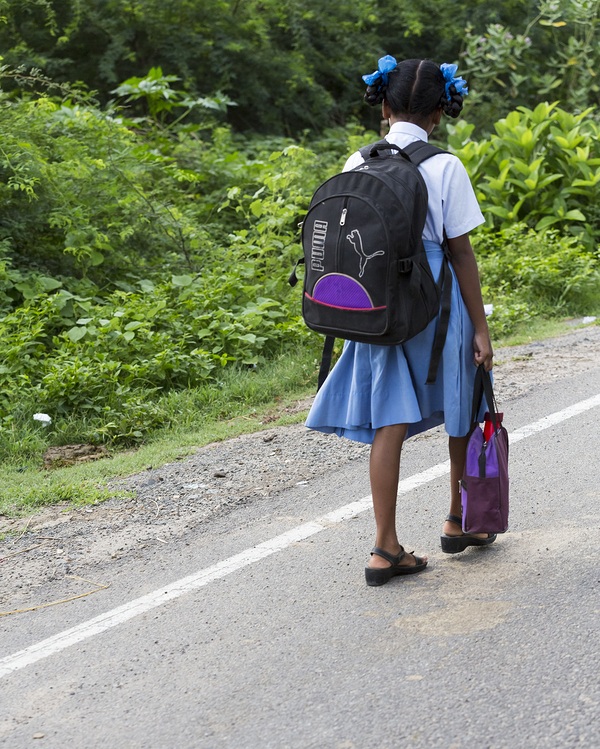A marathon is one of the most grueling sports events, consisting of running for 42 kilometers. High-performance athletes put their physical and psychological training to the test to cross the finish line and achieve their goal. What if the goal is to learn?
In a rural area in India, students have to travel this very distance every week to attend school, through the region’s monsoon season and characteristic scorching heat. What educational program do these schools use to motivate students to make the tremendous effort needed to go to school every day?
“When students are aware of their environment, they are emotionally connected to it and seek to help, are determining factors in the acquisition of meaningful learning experiences and a real possibility for their communities to thrive.”
After talking with the principal and teachers of the school in India, I recognized the same talents and fears of my fellow teachers in Mexico, Chile or Colombia. They all have the same dedication and commitment in their role as educators to the transformation of their communities; they are innovative, curious and concerned about their students’ wellbeing. This reflection produced two key concepts that I would like to share in this article: transformative pedagogy and social and emotional learning.
A transformative pedagogy is an educational approach that empowers learners to critically examine their contexts, beliefs and values (UNESCO, 2017) through spaces for analysis and appreciation for diversity. An example of this is the field work conducted by Tecnológico de Monterrey students in i Week. For five days, they met with Central American migrants to find out about the reality in which they live, in their longing to cross the border into the United States. The students described their visit to the train known as La Bestia (The Beast) as a concoction of mixed feelings, which rather than incapacitating them, has committed them to lifelong action (Robles, 2015). In Mexico, facing migrants’ reality is imperative, since this problem that involves thousands of people who leave their homes in their countries of origin to seek opportunities for improvement is right here in our midst. Teachers from the area of ethics clearly understood the need to include in the curriculum a real connection for students. This experience was accompanied by experiential work and classwork with hard data and statistics, to ensure that the transformative learning achieved will be long-lasting.
“A good school goes beyond having a modern infrastructure or a wide range of extracurricular activities, rather it is one that knows how to design educational experiences that promote learning, values, attitudes, and emotions; so that students are active members in their community.”
In addition, “soft skills” or “non-cognitive skills” have gained more attention as educators come to understand how critical they are for students’ success (Hinton, 2018), for example, being empathetic, appreciating diversity, building relationships, being socially responsible, displaying ethical responsibility, among others. To develop this kind of skills, I want to share some ideas and activities that you can implement with your primary and high school students. These skills are related to what is known as social and emotional learning (SEL), a process in which children and adults learn how to manage their emotions; set and achieve positive goals; feel and show empathy for others; build and maintain positive relationships; and make responsible decisions (CASEL, 2019). Therefore, when students are aware of their environment, they are emotionally connected to it and seek to help, are determining factors in the acquisition of meaningful learning experiences and a real possibility for their communities to thrive.
A good school goes beyond having a modern infrastructure or a wide range of extracurricular activities; rather it is one that knows how to design educational experiences that promote learning, values, attitudes, and emotions; so that students are active members in their community
I reflect that the motivation to embark on a 42-kilometer marathon to go to school is based on a profound commitment to transforming society into a better place, building a sustainable, peaceful community for current and future generations.
About the author
Mildred Vanessa López Cabrera (mildredlopez@itesm.mx) is the Director of Innovation and Educational Research at the School of Medicine and Health Sciences of Tecnológico de Monterrey. She is also a Ph.D. student in Educational innovation.
This article from Observatory of the Institute for the Future of Education may be shared under the terms of the license CC BY-NC-SA 4.0 
)
)

)